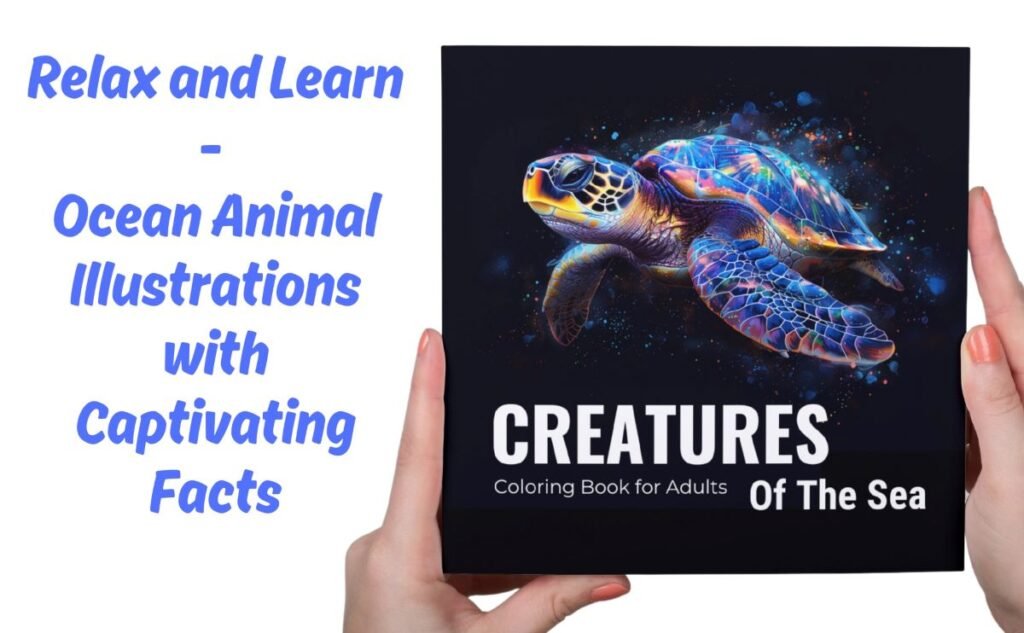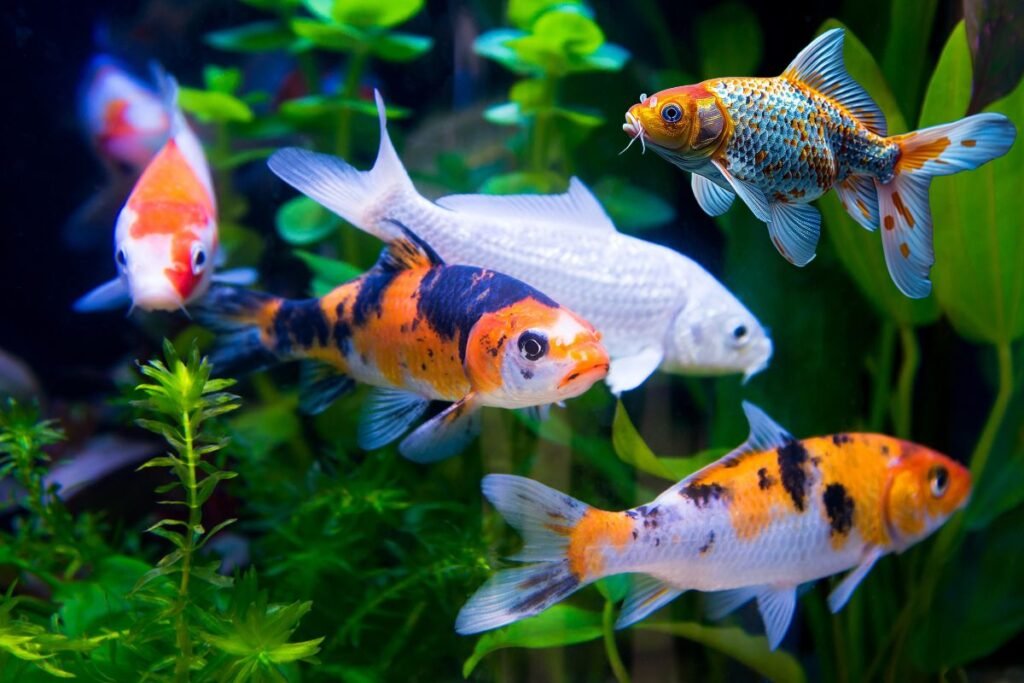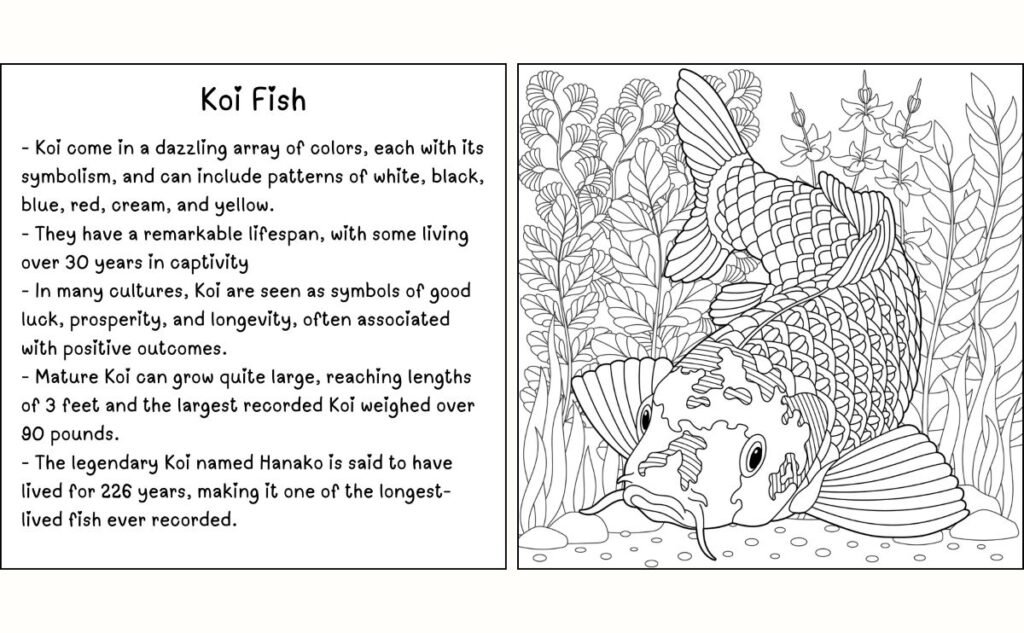Table of Contents
ToggleKoi fish, renowned for their resplendent hues and elegant swimming, have enthralled aficionados and pond proprietors for generations.
Originating from Japan, these ornamental fish epitomize not only aesthetic allure but also bear profound cultural import. In this extensive guide, we explore the intricate realm of koi fish, encompassing their history, varieties, care, and breeding practices.
Historical Context and Cultural Reverence of Koi Fish
The chronicle of koi fish extends over a millennium to Japan, where they were initially cultivated for their vivid pigmentation. Derived from the common carp (Cyprinus carpio) in rice paddies, meticulous selective breeding engendered the stunning, polychromatic koi we admire today.
In Japanese culture, koi fish are emblematic of luck, prosperity, and tenacity. They are a quintessential element in traditional Japanese gardens and frequently appear in art and folklore.
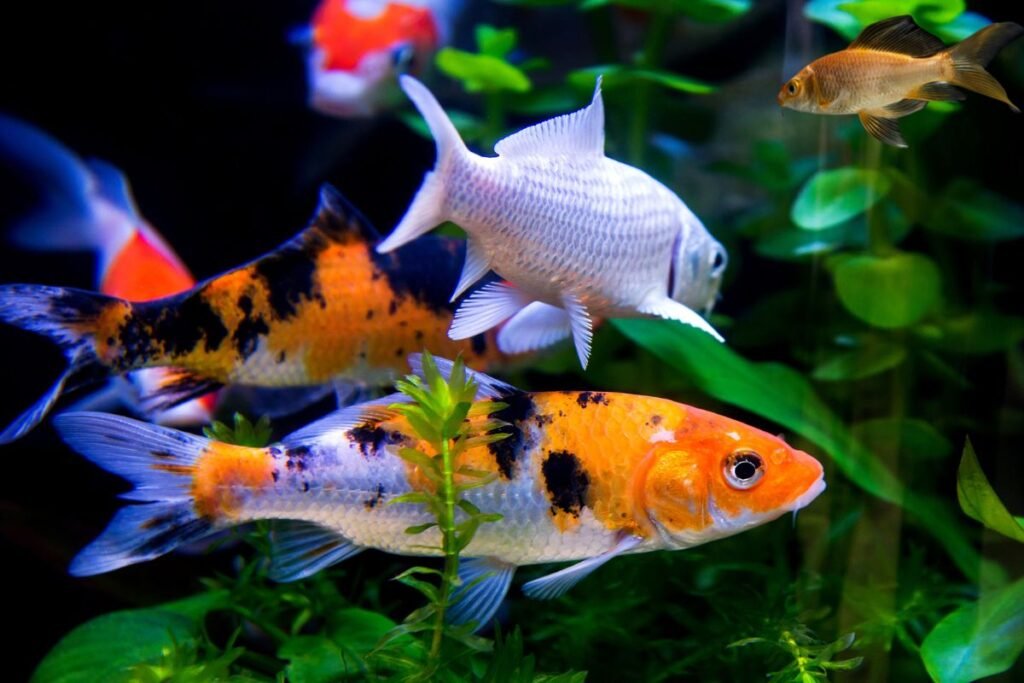
Varieties of Koi Fish
Koi fish manifest in numerous varieties, each distinguished by unique colors, patterns, and scalation. Here are some prominent types:
– Kohaku:
Distinguished by alabaster bodies adorned with crimson markings, Kohaku is one of the oldest and most cherished varieties.
– Taisho Sanke (Sanke):
These koi exhibit white bodies with red and black patterns, making them a cornerstone in many koi assemblages.
– Showa Sanshoku (Showa):
Showa koi possess ebony bodies with red and white patterns, rendering them visually captivating.
– Asagi:
Asagi koi boast azure scales with red or orange bellies and fins.
– Shusui:
Similar to Asagi, but with a scaleless or partially scaleless body, displaying a cerulean color with crimson markings.
Constructing the Ideal Koi Pond
Creating an optimal pond environment is paramount for the well-being and longevity of koi fish.
Key considerations for building a koi pond include:
Dimensions and Depth:
Koi ponds should be no less than 3 feet deep to shield fish from predators and temperature fluctuations. The dimensions should correspond to the number of koi, following a guideline of 250 gallons of water per adult koi.
Filtration Mechanism:
A robust filtration system is indispensable for maintaining water quality. Mechanical and biological filters eliminate debris and decompose harmful ammonia and nitrites.
Aeration:
Adequate aeration is crucial for oxygenating the water. Air pumps and water features like waterfalls or fountains can enhance oxygen levels.
Water Quality:
Regular testing and maintenance of water quality are imperative. Ideal parameters include a pH level between 7.0 and 8.0, ammonia and nitrite levels at 0 ppm, and a nitrate level below 40 ppm.
Flora and Landscaping:
Aquatic plants not only embellish the pond but also provide shade and improve water quality by absorbing nitrates. Popular choices include water lilies, lotus, and marginal plants like cattails.
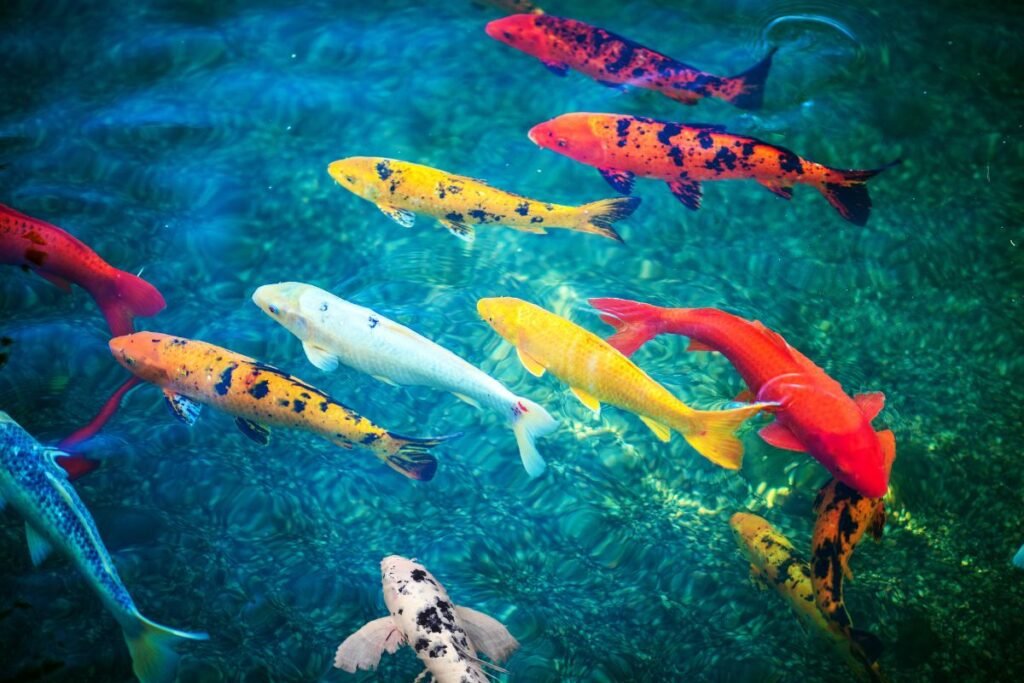
Nourishing Koi Fish
Koi fish are omnivorous with diverse dietary requirements. A balanced diet ensures their vibrant hues and overall health.
Here are some feeding guidelines:
Commercial Pellets:
High-quality koi pellets are specifically formulated to provide essential nutrients. Opt for pellets with a balanced composition of protein, fat, and vitamins.
Supplemental Nourishment:
In addition to pellets, koi can be fed fresh vegetables (such as lettuce and peas), fruits (such as watermelon and oranges), and protein sources (such as shrimp and earthworms).
Feeding Cadence:
Feed koi 2-3 times daily, only as much as they can consume within 5 minutes. Overfeeding can lead to water quality issues and health problems.
Seasonal Adjustments:
Koi metabolism decelerates in colder months. During spring and autumn, switch to wheat germ-based foods that are easier to digest. In winter, feeding should be minimal or ceased entirely if water temperatures drop below 50°F.
Koi Fish Health and Disease Management
Ensuring the health of koi fish necessitates proactive care and vigilance for signs of disease.
Common health issues and preventive measures include:
Parasites:
External parasites like flukes, lice, and anchor worms can afflict koi. Regular inspections and treatments with antiparasitic medications can avert infestations.
Bacterial Infections:
Ulcers, fin rot, and dropsy are prevalent bacterial infections. Maintaining good water quality and administering antibiotics as needed can manage these conditions.
Fungal Infections:
Fungal growths, often manifesting as cotton-like patches, can occur in stressed or injured koi. Treatments include antifungal medications and salt baths.
Viral Diseases:
Koi Herpes Virus (KHV) and Spring Viremia of Carp (SVC) are grave viral diseases. Quarantining new fish and maintaining optimal water conditions can help prevent outbreaks.
Breeding Koi Fish
Breeding koi fish necessitates meticulous planning and a conducive environment. Steps to successfully breed koi include:
Selecting Breeding Pairs:
Choose healthy, mature koi with desirable traits. Males are typically more slender with rough pectoral fins, while females are rounder.
Spawning Environment:
Provide a shallow area with spawning mops or brushes where eggs can adhere. The water temperature should be around 68-74°F.
Spawning Process:
Koi typically spawn in the early morning. After spawning, remove the eggs to a separate tank to protect them from being consumed by adult koi.
Egg Care and Hatching:
Eggs will hatch in 3-7 days, depending on water temperature. Maintain good water quality and aeration in the hatching tank.
Fry Care:
Feed the fry infusoria or commercially available fry food. Gradually transition to larger foods as they grow. Regularly monitor water quality and perform water changes.
Koi Fish and Their Role in Garden Design
Koi ponds often serve as central features in garden design, providing tranquility and aesthetic appeal.
Design tips for incorporating koi ponds into gardens include:
Integration with Landscape:
Position the pond in a location that harmonizes with the surrounding landscape. Consider viewpoints from different areas of the garden.
Safety and Accessibility:
Ensure the pond is safe for children and pets by installing barriers or shallow edges. Create easy access points for feeding and maintenance.
Lighting and Aesthetics:
Underwater and landscape lighting can enhance the pond’s beauty at night. Incorporate natural elements like rocks and driftwood for a more organic look.
Seasonal Beauty:
Plant a variety of flora that blooms in different seasons to keep the garden vibrant year-round. Include evergreens for winter interest.
Conclusion
Koi fish are a delightful addition to any garden pond, offering both beauty and serenity. By understanding their history, varieties, care requirements, and role in garden design, enthusiasts can create a thriving environment for these magnificent creatures.
With proper care and attention, koi fish can live for decades, providing endless joy and inspiration to their caretakers.
